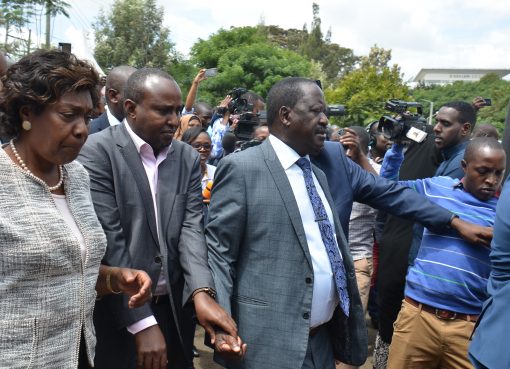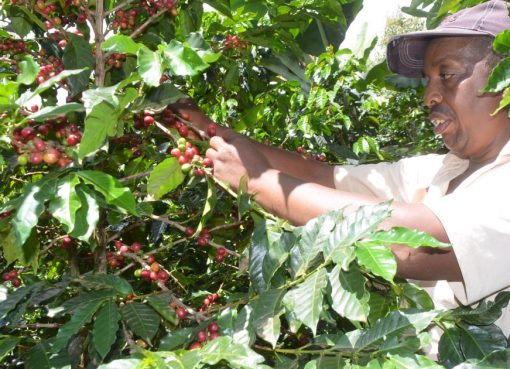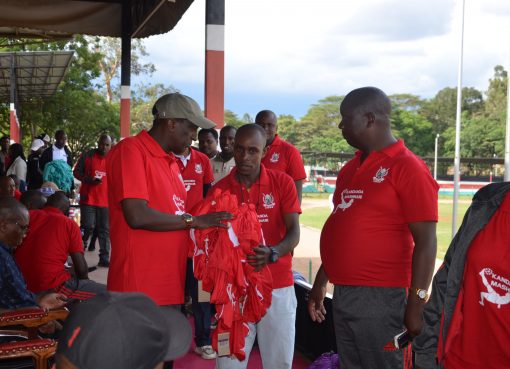The Government is seeking an investment of 3.4 Billion US dollars (Sh440 billion) spread over 10 years (from 2022 to 2032) from donors in order to make the livestock feed sector secure and resilient in times of calamities.
The head of Animal Feeds and Nutrition Services at the Ministry of Agriculture and Livestock Development, Dr. Stanley Mutua said Ministry carried out a research in arid areas in 2018 -19 and in non-arid areas in 2019 to 2022 and the report showed that the country is facing a 60 percent feed shortage and even out of what is being produced, 46 percent goes to waste.
“Kenya requires 55 million metric tonnes of dry matter animal feed annually but only produces 40 per cent leaving a huge supply gap of 33 million metric tonnes, which unfortunately has to be imported and this leaves this critical sector in a very precarious position,” Dr. Mutua said.
He said it’s in this regard that the Ministry has come up with a National Feed Policy after it also emerged that Kenya`s livestock sector was facing a 26 per cent malnutrition which has caused stunting, thus affecting productivity.
Dr. Mutua was speaking in Naivasha on Monday during a five-day workshop attended by six African countries piloting the Resilient African Feed and Fodder Systems (RAFFS) program hosted by the African Union-Inter African Bureau for Animal Resources (AU-IBAR) to look at the issues facing African countries feed inventory and balance for Africa, establish the status of the feed sector and agree on common Africa approach on the sector.
Dr. Mutua said from the report of the aforementioned research which was done in two phases, the Ministry of Agriculture and Livestock Development has come up with various Interventions which include; promotion and priotizing 10 feed value chain to produce required feed in the country.
He noted that the government’s national feed strategy will help to address animal feeds and water shortages for livestock and feed quality by looking at energy sources such as maize and sorghum and protein-rich sources such as soya, sunflower and cotton seed and black soldier fly for animal protein.
To reduce losses, the animal health expert said the Government has initiated measures to address production, storage and conservation of the feed by investing in storage infrastructure where feed storage hubs will be constructed in every county with a capacity of 100,000 bales of fodder each weighing 15 kilograms. This translates to will help produce 4.3 billion bales of hay every year through an investment of 3.4 Billion dollars (Sh480 billion) spread over 10 years and help bridge the deficit in feed production.
“Through the report, we have come up with a feed delivery model in order to stem malnutrition which now stands at 26 per cent and have also come up with a model to reduce cost by producing feed in bulk and a feed emergency program,” Mutua stated.
We also intend to reduce post-harvest losses by linking the end user and producer and we have come up with Feed Investment Plan (2023-2024) which we have used to pitch for funding and have already used Sh. 164 US million dollars on it and we expect to use a further 267 US million dollars on the same this financial year.
During the five-day meeting, Kenya will be reporting on how they have utilized data from research and explain a national feed strategy for 10years for sustainable livestock production.
Mr. David Maina from the AU-IBAR- Resilient African Feed and Fodder Systems (RAFFS) program said the two organizations were working with farmers to create inventory that will show the status of livestock feed in the concerned countries for the purposes of planning.
This, he said will help the sector to bounce back and support economies of these countries, especially after a disaster such as drought.
“We need know where we are and strategize so that the countries can have a robust livestock sector and this can be done by keeping the sector resilient to avoid losses when disasters strike,” Maina said.
He said for now the livestock feed sector was not robust yet as, data has been missing, making it difficult to act when disasters strike and prepare for the growing demand to feed the growing population
“Each country should be able to evaluate themselves in order to prepare for any eventuality,” He said.
Prof. Isabelle Baltenweck, an economist at the International Livestock Research Institute (ILRI) in Nairobi said the problems facing the livestock sector in Africa is diseases, poor genetics and lack of enough and quality feeds and countries should be able to be feed secure to avoid losing animals when disters occur.
“We are embracing data policy where we rae bale to use technology to assess which feeds are availability in each area or country and ew are collaborating with them on methods on assessing feed availabilities in varies areas, what support is required in order to increase availability,” She said.
The RAFFS Project is a three-year Emergency/ Short Term Response Project, jointly for AU-IBAR funded by the Bill & Melinda Gates Foundation, and the African Union Commission. It is mandated to lead and support livestock development across the continent. It is a collaborative effort to address the adverse effects of recent global crises, the triple C’s—COVID-19, climate change shocks, and the conflict between Russia and Ukraine—on African feed and fodder systems.
The project is also designed to stimulate a greater understanding of the impact of the recent and ongoing crises—COVID-19, climate change (drought and flooding), and the Russia-Ukraine conflict—on the feed and fodder sector.
An estimated 8.9 million livestock, 2,5 million of them in Kenya, were lost in the greater horn of Africa alone during the recent drought that ravaged the region for nearly two years, thus causing a loss to the affected countries totaling about half a billion US dollars (Sh. 70 billion).
Cameroon, Kenya, Nigeria, Somalia, Uganda, and Zimbabwe are the six African Union Member States where the project is being piloted since their livestock has a high contribution to livelihoods, incomes, and the economy, and where coordinated action and substantive investment can be quickly mobilized to respond to the shortages.
According to the Food and Agriculture Organization (FAO), Kenya’s livestock sector accounted for 4.4 per cent of the country’s Gross Domestic Product equivalent of Sh. 3.4 billion as of 2017 statistics.
As of 2017 data, the country’s animal population comprised 44.6 million poultry, 18.8 million cattle, 26.7 million goats, 18.9 million sheep, 3.2 million camels, 1.9 million donkeys, and 0.5 million pigs.
According to FAO, Kenya’s beef production stands at 588,000 metric tonnes and cow milk production at 4.1 billion litres per year, and the demand for livestock products is projected to increase exponentially driven by population growth by the year 2050.
The study titled Future of Livestock in Kenya 2019 shows that by the year 2050, meat and cow milk consumption will increase by 1.4 and 6.6 million metric tonnes annually respectively.
By Mabel Keya – Shikuku





